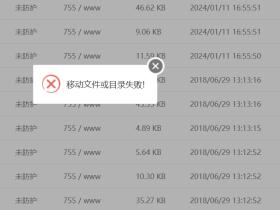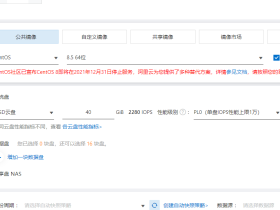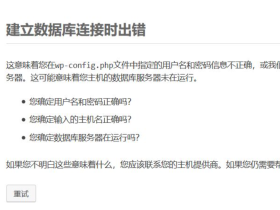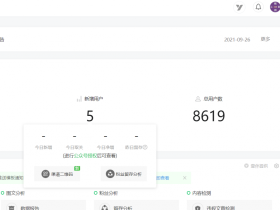<?php/*single page?show current category articles*/?>
<?phpif ( is_single() ) :global $post;
$categories = get_the_category();
foreach ($categories as $category) : ?>
<li class="widget widget_recent_entries" id="<?php $category->term_id;?>-posts">
<h2 class="widgettitle"><?php echo $category->name; ?></h2>
<ul>
<?php $posts = get_posts('numberposts=5&category='. $category->term_id);
foreach($posts as $post) : ?>
<li>
<a href="<?php the_permalink(); ?>"><?php the_title(); ?></a> </li>
<?php endforeach; ?> </ul> </li>
<?phpendforeach; endif ; ?>
<?php/*end show current category articles*/?>
其中,numberposts=5&category='. $category->term_id,是在获取本分类下的5篇文章。文章源自原紫番博客-https://www.yuanzifan.com/53255.html
基于这段代码,结合Get_Posts()函数,我们可以对这种获取进行更细化的操作。比如获取随机的文章,或获取最早、最晚的文章。都是可以的。文章源自原紫番博客-https://www.yuanzifan.com/53255.html
首先看一下Get_Posts()函数的官方说明。文章源自原紫番博客-https://www.yuanzifan.com/53255.html
get_posts 函数详解
该函数属于 WordPress 的内置函数,用于在 WordPress 中提取多篇指定或随机文章。
使用方法:文章源自原紫番博客-https://www.yuanzifan.com/53255.html
<?php
$args = array(
'numberposts' => 5,
'offset' => 0,
'category' => ,
'orderby' => 'post_date',
'order' => 'DESC',
'include' => ,
'exclude' => ,
'meta_key' => ,
'meta_value' => ,
'post_type' => 'post',
'post_mime_type' => ,
'post_parent' => ,
'post_status' => 'publish' );
$posts_array = get_posts( $args );
?>
|
$args是该函数必要的变量,也就是该函数的参数。
get_posts( $args )将返回数组型的变量。文章源自原紫番博客-https://www.yuanzifan.com/53255.html
<?php
$args = array(
//需要提取的文章数
'numberposts' => 10,
//以第几篇文章为起始位置
'offset' => 0,
//分类的ID,多个用逗号将分类编号隔开,或传递编号数组,可指定多个分类编号。
//大部分 CMS 使用该函数的重点。
'category' => ,
//排序规则(注1)
'orderby' => 'post_date',
//升序、降序 'ASC' —— 升序 (低到高) 'DESC' —— 降序 (高到底)
'order' => 'DESC',
//要显示文章的ID
'include' => ,
//要排除文章的ID
'exclude' => ,
//自定义字段名称
'meta_key' => ,
//自定义字段的值,配合上一个参数,来选择显示符合自定义字段数值的文章。
'meta_value' => ,
//post(日志)——默认,page(页面),
//attachment(附件),any —— (所有)
'post_type' => 'post',
//文章的 mime 类型
'post_mime_type' => ,
//要显示文章的父级 ID
'post_parent' => ,
//文章状态
'post_status' => 'publish' );
?>
变量参数详解
上面介绍了默认的数组中的类型,其中比较重要的是排序,即Orderby。Wordperss官方给出的参数是以下这些:
‘author’ —— 按作者数值编号排序
‘category’ —— 按类别数值编号排序
‘content’ —— 按内容排序
‘date’ —— 按创建日期排序
‘ID’ —— 按文章编号排序
‘menu_order’ —— 按菜单顺序排序。仅页面可用。
‘mime_type’ —— 按MIME类型排序。仅附件可用。
‘modified’ —— 按最后修改时间排序。
‘name’ —— 按存根排序。
‘parent’ —— 按父级ID排序
‘password’ —— 按密码排序
‘rand’ —— 任意排序结果
‘status’ —— 按状态排序
‘title’ —— 按标题排序
‘type’ —— 按类型排序文章源自原紫番博客-https://www.yuanzifan.com/53255.html
实例刚我们讲到用数组去传参,当然我们也可以用字符串来给该函数传参,下面给一个简单的例子。文章源自原紫番博客-https://www.yuanzifan.com/53255.html
需要注意的是,如果单纯想要用升序或者降序,只使用Order函数即可。Orderby这个函数的值不可以等于desc或者asc,那样会报错。文章源自原紫番博客-https://www.yuanzifan.com/53255.html
下面几个简单的例子,帮大家理解Get_Posts()函数。文章源自原紫番博客-https://www.yuanzifan.com/53255.html
//显示随机的3篇文章
<?php
$posts_rand = get_posts('numberposts=3&orderby=rand');
?>
//时间顺序从早到晚显示10篇文章
<?php
$posts_ten = get_posts('numberposts=10&order=asc');
?>
//显示10篇文章,但是排除分类序号为12的文章
<?php
$posts_excupost = get_posts('numberposts=10&order=asc&exclude=12');
?>
希望以上几个实例,可以帮你更好的了解Wordpress的Get_Posts()方法。文章源自原紫番博客-https://www.yuanzifan.com/53255.html
原梓番博客原创,转载注明出处。
需要Wordpress技术支持的可以点这里:WordPress主题插件修改配置











评论